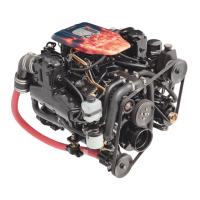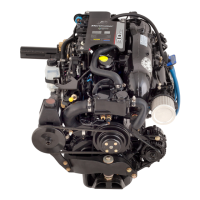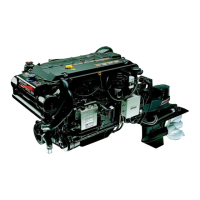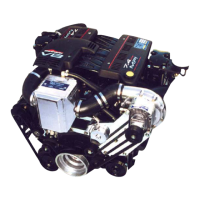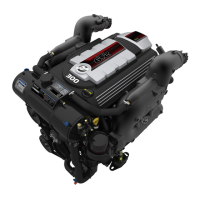Exhaust System
Page 6A-18 90-863758060 AUGUST 2006
• 48 in. (bench seat length) ÷ 20 in. (seat width) = 2.4 persons. 2.4 persons rounded
down = 2 persons.
• 55 in. (bench seat length) ÷ 20 in. (seat width) = 2.75 persons. 2.75 persons rounded
up = 3 persons.
1. Take the maximum capacity weight as listed on the capacity plate (XXXX lb. Persons,
Gear) and subtract the swim platform load, if applicable.
2. Next divide the weight by 74.84 kg (165 lb.) per person. This gives the whole number
and remainder of 74.84 kg (165 lb.) persons to load onto the boat.
3. Put the remainder of a person in the next available seat. See Boat loading diagram.
CE Capacity Plate USCG Capacity Plate
IMPORTANT: If there is not enough seating for the number of people, treat the leftover
weight as cargo. Load cargo weight onto the boat before loading passenger weight.
4. If applicable, load cargo (leftover persons weight) onto the boat. Distribute cargo as
described below.
IMPORTANT: If the boat configuration does not allow for aft, center, and bow storage,
choose the storage application from the Optional Cargo Distribution table that best applies
to your boat configuration.
Preferred Cargo Distribution
Aft storage Center storage Bow storage
25% 50% 25%
Optional Cargo Distribution
Aft storage Center storage Bow storage
25% 75% None
None 75% 25%
50% None 50%
None 100% None
100% None None
None None 100%
5. Perform the first measurement with the swim platform loaded and the person taking
the waterline measurement on the boat.
6. Load the swim platform if equipped.
7. Measure the exhaust elbow waterline height.
IMPORTANT: View all boat seating as rows that are parallel to the transom of the boat.
8. Load a person weight into a seat, and measure the exhaust elbow waterline height after
each person weight is loaded onto the boat. Repeat until a person weight is is loaded
into each seat in that row.
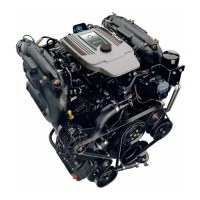
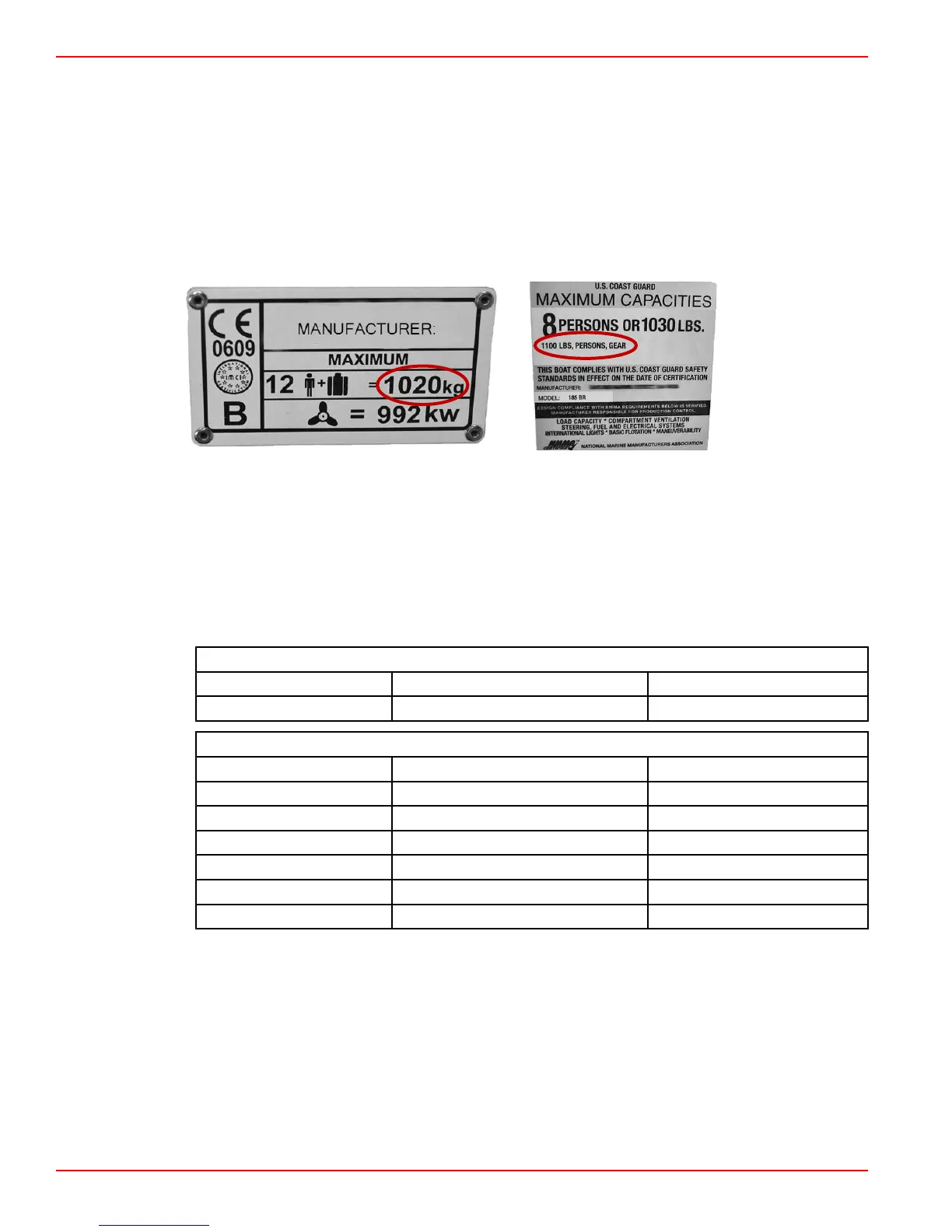